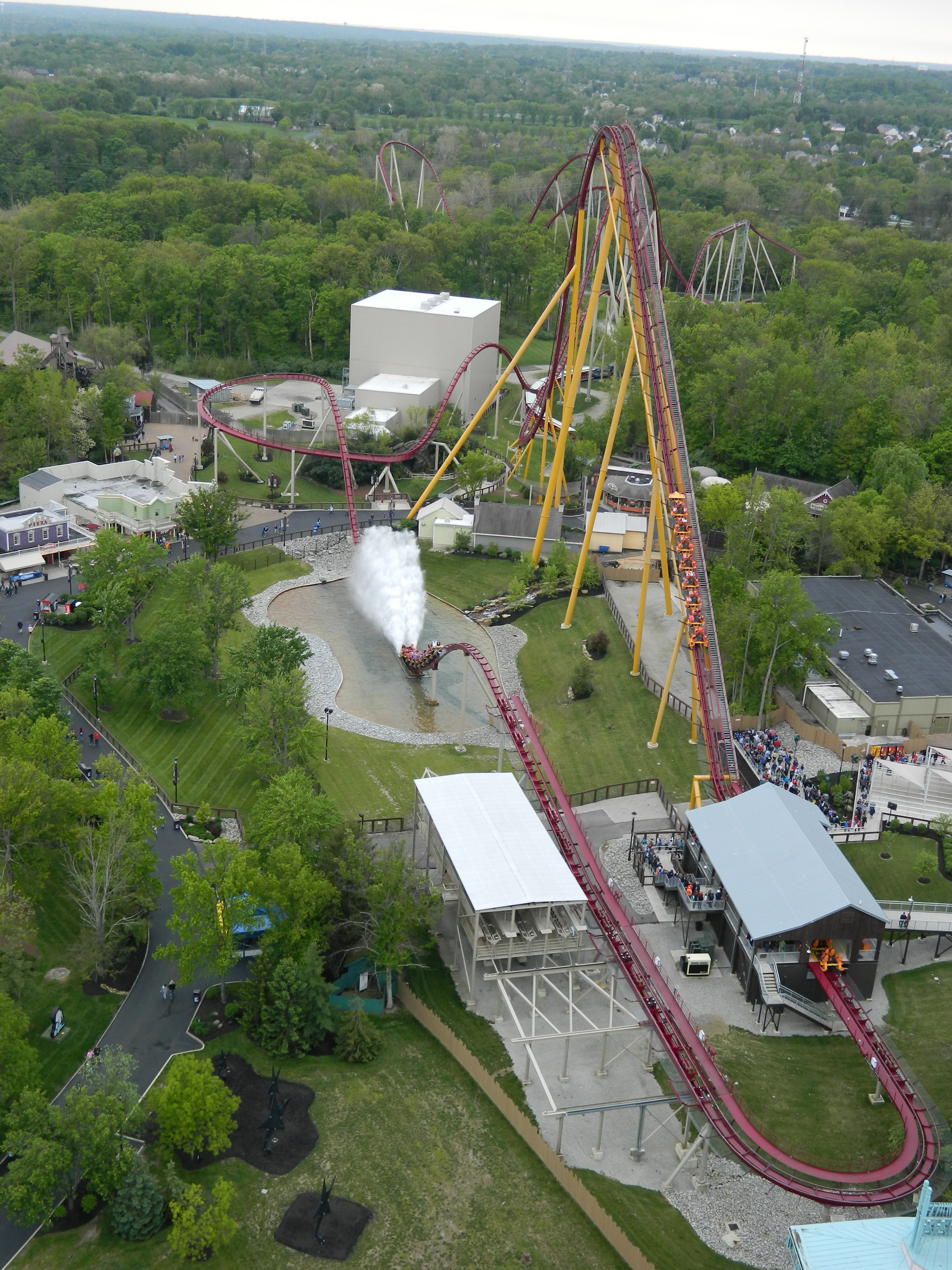Roller coasters
have been around a surprisingly long time dating back to the
17th century. The first recorded roller coasters were in
Russia and were called the "Russian mountains" (ironically).
They were tall ice chutes constructed using frozen water and
boards for support. It is believed that they were
commissioned by Russia's Cathrine the Great in the Gardens
of Oranienbaum in St. Petersburg in the year 1784. However,
some say that that the french built the first ride in 1817
which featured wheeled cars that securely locked into tracks
to keep it from flying off during high speeds.
However,
some say that that the french built the first ride in 1817
which featured wheeled cars that securely locked into tracks
to keep it from flying off during high speeds.
Fast forward to America 10 years later a mining company out of Pennsylvania constructed the Mauch Chunk gravity railroad, which is an 8.7 mile downhill track designed to deliver coal to the town of Jim Thorpe. But by the 1850's the company was providing rides to
adrenaline junkies for 50 cents a ride. With the growing
popularity of this reaching railroads also a
But by the 1850's the company was providing rides to
adrenaline junkies for 50 cents a ride. With the growing
popularity of this reaching railroads also a
http://en.wikipedia.org/wiki/Roller_coaster#/media/File:Promenades_Aeriennes_Jardin_Baujon.jpg
man named La Marcus Adna Thompson Designed a gravity switchback railway that opened on coney island in Brooklyn, New York in 1884. How it worked is passengers would climb to the top of the ride, get in the cart and ride it to the other side where it switched tracks to return to the beginning. finding this to be quite inefficient Philip Hinkle introduced a full circuit roller coaster where the rider didn't need to leave the cart during the ride. Seeing this as a competition LaMarcus patented a design that included dark tunnels and with that hired Fredrick Ingersoll's construction company to build them across the us during the first couple decades of the 20th century.
 However,
some say that that the french built the first ride in 1817
which featured wheeled cars that securely locked into tracks
to keep it from flying off during high speeds.
However,
some say that that the french built the first ride in 1817
which featured wheeled cars that securely locked into tracks
to keep it from flying off during high speeds.Fast forward to America 10 years later a mining company out of Pennsylvania constructed the Mauch Chunk gravity railroad, which is an 8.7 mile downhill track designed to deliver coal to the town of Jim Thorpe.
 But by the 1850's the company was providing rides to
adrenaline junkies for 50 cents a ride. With the growing
popularity of this reaching railroads also a
But by the 1850's the company was providing rides to
adrenaline junkies for 50 cents a ride. With the growing
popularity of this reaching railroads also a http://en.wikipedia.org/wiki/Roller_coaster#/media/File:Promenades_Aeriennes_Jardin_Baujon.jpg
man named La Marcus Adna Thompson Designed a gravity switchback railway that opened on coney island in Brooklyn, New York in 1884. How it worked is passengers would climb to the top of the ride, get in the cart and ride it to the other side where it switched tracks to return to the beginning. finding this to be quite inefficient Philip Hinkle introduced a full circuit roller coaster where the rider didn't need to leave the cart during the ride. Seeing this as a competition LaMarcus patented a design that included dark tunnels and with that hired Fredrick Ingersoll's construction company to build them across the us during the first couple decades of the 20th century.